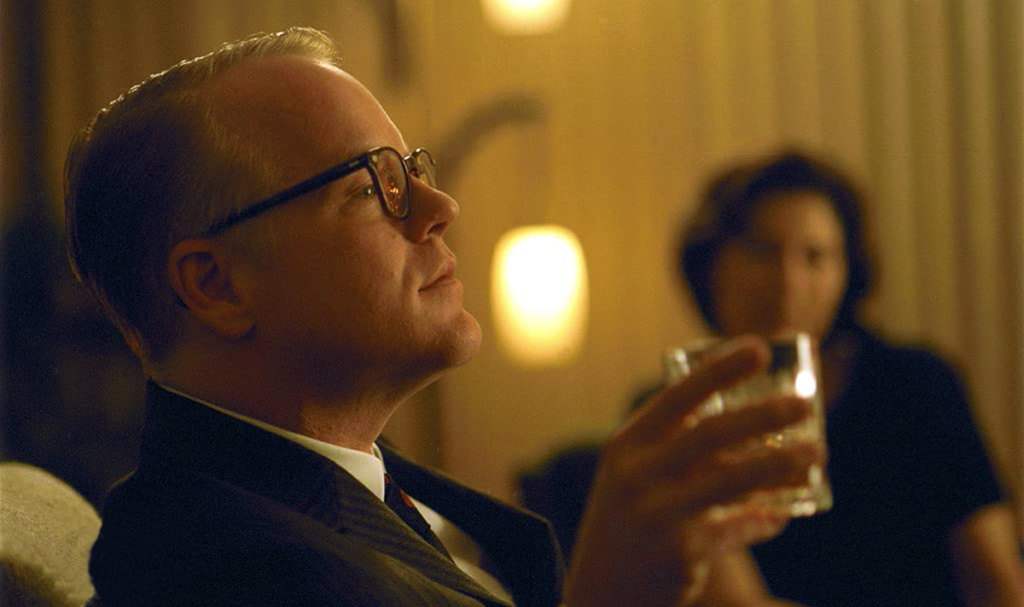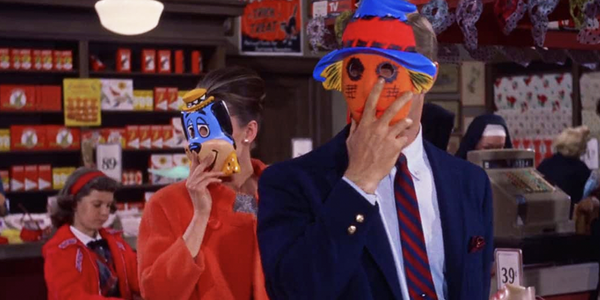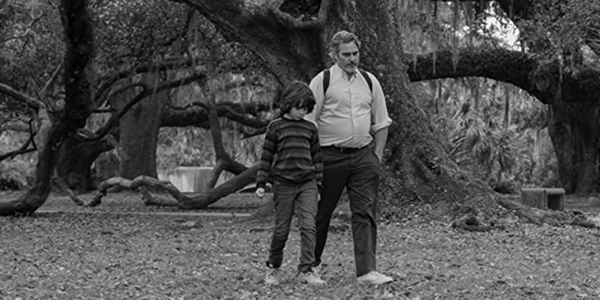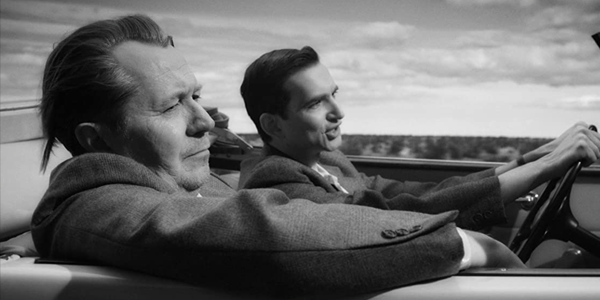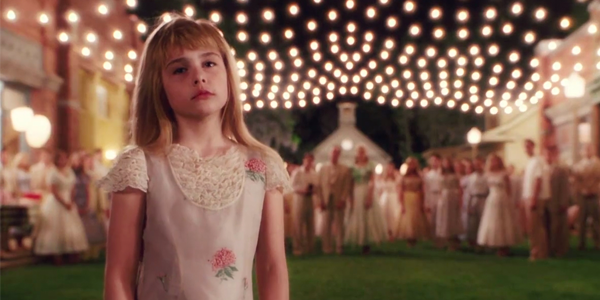also on Cineluxe
Sign up for our monthly newsletter
to stay up to date on Cineluxe
Strong performances, haunting cinematography, and powerful real-life source material make this 2005 rumination on the deeply flawed author worth a look
by Michael Gaughn
December 9, 2022
There’s not much point in beating up on older films since they’re already relegated to the past. Why take the time to pluck something out and hold it up for examination if it’s not worth recommending? That said, I think it’s fair game to talk about a flawed movie if it’s worth seeing at least once, especially if watching it offers some perspective on movies of the time or since. And that would be Capote.
This is a good film that could have been a great one—which is why I revisit it occasionally, only to experience the same frustration every time. It became apparent on this most recent viewing that it’s not great exactly because it was made at the moment when the movies stopped aiming that high, when they decided to invest only in the safely known and merely ape “great” gestures, putting all their money on style to convince audiences they were seeing something substantial; when they chose to divert instead of absorb.
Philip Seymour Hoffman, Chris Cooper, Catherine Keener, and Clifton Collins Jr. are all exceptionally strong. Even Bruce Greenwood wrings every last drop out of the thankless straw man he’s asked to play. The cinematography is accomplished and sometimes stunning, making the subdued palette as expressive as its limited tonal range will allow. Some of the scenes are powerful, with about half the credit going to the acting and half to the writing. And the subject matter—the intersection of the depraved slaying of a wealthy Kansas farm family by a pair of disaffected drifters and Capote’s efforts to capture that act and its aftermath in a book—is compelling enough to bear the film along even at the moments when it sags.
To see how badly somebody can botch the exact same material, watch Infamous, released the same year—although I wouldn’t recommend approaching that radioactive stink bomb without a hazmat suit. Highlights include Sigourney Weaver as, as best I can figure, a female impersonator, a woefully miscast Daniel Craig as Perry, and the novel concept of gay sex in prison.
Capote aces Infamous in every way. The problem is that it’s also, in every way, shallow; lacking the courage the material demands, it offers instead an initially convincing but ultimately hollow simulation of strength. Hoffman comes tantalizingly close to translating Capote into a fully realized fictional being but needed a better director than Bennett Miller, someone who could tell him when too much of his own, more regular-guy personality was showing through and when he was slipping into caricature. And the cinematography is so proud of its own stylishness that it loses sight of when it’s no longer serving the material. Seizing on the muted colors offered by the Arts & Crafts revival raging at the time the movie was made, the filmmakers make it look like the events happened sometime between the the 1930s and mid ‘50s instead of the early 1960s. But those events were very much a product of their era, and not staying true to the transitional, sometimes disruptive look of that time robs the movie of much of its potential power. Then there’s the pouty adolescent “the never shines in this world” aesthetic, which, with its myopic brattiness, underscores the film’s larger myopia.
Miller and company would like you to think they’re being trenchantly spare, allusive, enigmatic, speaking in a kind of haiku, but they’re merely striking a series of poses—mainly because they don’t know how to do anything more substantial. That was really driven home when I watched the bonus features and realized all involved could be mistaken for J Crew models. People from those kinds of backgrounds, so sure of themselves and so eager to please, couldn’t begin to fathom let alone effectively portray deeply tortured figures like Perry and Capote.
Representative is the scene where Capote gives Perry a copy of Walden, telling him Thoreau was put in jail because he was an outsider. Capote might have actually said that, but I doubt it. It feels more like a screenwriter trying to telegraph a point and missing the mark by a country mile. (For those playing along at home, Thoreau was in jail because he wanted to be there not because anyone was eager to lock him up.)
There are instances everywhere of the filmmakers getting things wrong just because they weren’t interested enough in getting them right (like Hoffman’s height as Capote varying by more than a half foot during the course of the film so that in one long shot he almost looms over Chris Cooper). But maybe the biggest flaw is that Hoffman’s character is the only one that shows any nuance, who goes through any significant changes. Everyone else is just there to provide context and foils and help fill the frame.
Miller’s constant need to seem cool and detached also kept him from doing anything interesting with Foxcatcher, another project with tremendous potential but realizing practically none of it, and another one where a based-on-true-life lead—in this case Steve Carrell—comes across as borderline cartoonish.
Because it tackles a deep subject shallowly, Capote is good for two or three viewings at most. By then, you’ve learned all its mannerisms. It’s not one of those films that matures, offering something new and deeper each time—and my point is that it should be. My other, perhaps larger, point is that this has become the way of the world. That it’s fashionable to treat blockbusters as disposable—as popcorn movies—masks the larger problem that no current films are substantial enough to have any worth beyond their first release, let alone establish a legacy based on anything other than marketing. We’ve all become so cool and detached we’re no longer capable of—or interested in—producing anything that challenges and endures.
Michael Gaughn—The Absolute Sound, The Perfect Vision, Wideband, Stereo Review, Sound & Vision, The Rayva Roundtable, marketing, product design, some theater designs, a couple TV shows, some commercials, and now this.
PICTURE | While the cinematography is well served by the HD transfer, you can constantly sense how much more a straight 4K transfer would bring the experience
SOUND | The spare mix helps to highlight the impressive dynamic range, bringing an effective sense of presence to many of the scenes
© 2023 Cineluxe LLC


